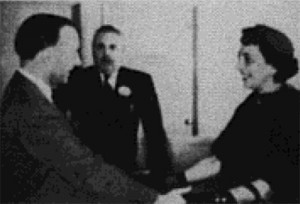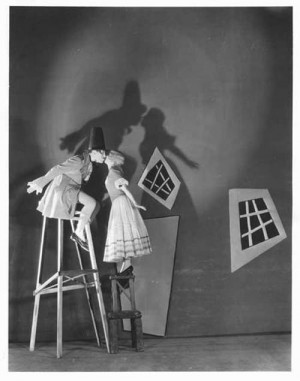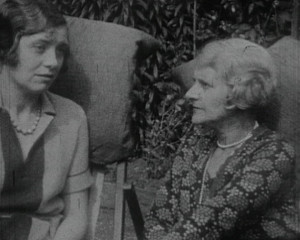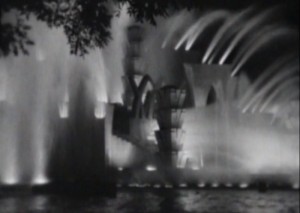"In Love Apples, Henry Hoke presented what is, so far as Movie Makers records show, the first approach to filming the hobby and preoccupation of an entire family. Unquestionably the Hoke family likes tomatoes and, something less commonly encountered, it is willing to work to produce them. Mr. Hoke's Kodachrome film lets us see the entire family group at work planting, weeding, watering and picking — especially picking, because Mr. Hoke makes quite a cinematic point of eager hands reaching for tomatoes in and out of season. The continuity is active and full of humorous touches, with a shade too great an emphasis on camera tricks for their own sake; the photography is adequate and often provides much screen beauty. Above all, this film has a unity which, added to its unusual motive, brings it into the Honorable Mention class." Movie Makers, Dec. 1936, 549-550.
"The Motion Picture Club of the Oranges was formed in 1924 and, after a year's work, produced a two-reel picture, 'Love by Proxy'. which attracted considerable attention in amateur circles. This was made on 16 millimiter film. Then the club made a two-reel 35 millimiter production, 'Hey-Hey!'." Photoplay, Jun. 1928, 66-7.

"The Toronto Movie club has cast several of its members in a comedy involving the boss, his daughter, and two bond sales-men. The usual conflicts-the daughter's choice finds some difficulty with her father. And there are two gunmen looking for easy money. A different touch of the old story, well paced, with a fine cast who move about with comic realism" PSA Journal, Nov. 1958, 46.
"Love in String is a most ambitious animated attempt to tell a yarn with yarn. Boy yarn meets girl yarn and together they spin a yarn of love on a tropical isle. Some coconuts later the story comes to a close with a thunderous climax. A sound track synchronized with the animated twine contributes a great deal to the effectiveness of the production. This picture also won the MPD Humorous Film Award" PSA Journal, Sept. 1965, 50.

"Zero is an aspiring artist, but he is a wraithlike being, and his ornate appearance makes him even more of a caricature. Just as sound had been approximated in A Hollywood Extra through close ups of a bugle, so zero's playing of the same instrument leads to his meeting with his true love, Beatrix. However, when she is recalled by the Grand Vizier of Afghanistan, their brief union presages the fatal failure of Zero's mingling with the outside world. Reading his future in a mammoth book of destiny filled with grotesque and discouraging words, an organ-grinder brings to play the inexhorable tune of fate to which zero must dance. Zero's life becomes a perpetual nightmare, surrounded by monstrous ghouls, whose giant, deformed faces leer, laugh, mutter, and point as they surround and overwhelm him. In the end, as Zero's name implies , his music, life, and love, count for a sum of nothing" Taves, 104.

"Amateur filmmaker, cinema historian and railway engineer H.A.V. Bulleid creates a brooding atmosphere in this tale of young love turned sour. When Jack and Daphne seal their love on Lovers' Lane, they promise to meet there every month to commemorate their marriage. Despite starting out as the happiest couple in the world, Jack soon becomes distant and when he is increasingly called away on business, Daphne suspects he may be getting tired of her. And when Jack begins seeing someone else, he asks Daphne for a divorce, with tragic consequences" (EAFA Database).

Luci di Parigi: da mattina a sera ed a notte = Lights of Paris: from morning to evening and at night.
"doc. a fantasia"/avant-garde documentary
"Puppets have gained favor and interest among amateur filmers and Mr. and Mrs. Frank Kallenberg have done a right smart job with a table full of animals from the forest. The story opens with a monkey in a rocking char, reading his cook book. He turns the page to the recipe for ducks. This stimulates him to seek a duck, the capture of which creates quite an uproar among the animals. In the end, Mr. Monkey becomes aware of the error of his ways. This type of work is tedious and painstaking and these filmers have demonstrated their patience and skill in the movement of the many characters in telling a homey little story." PSA Journal, Nov. 1957, 33.
Total Pages: 299